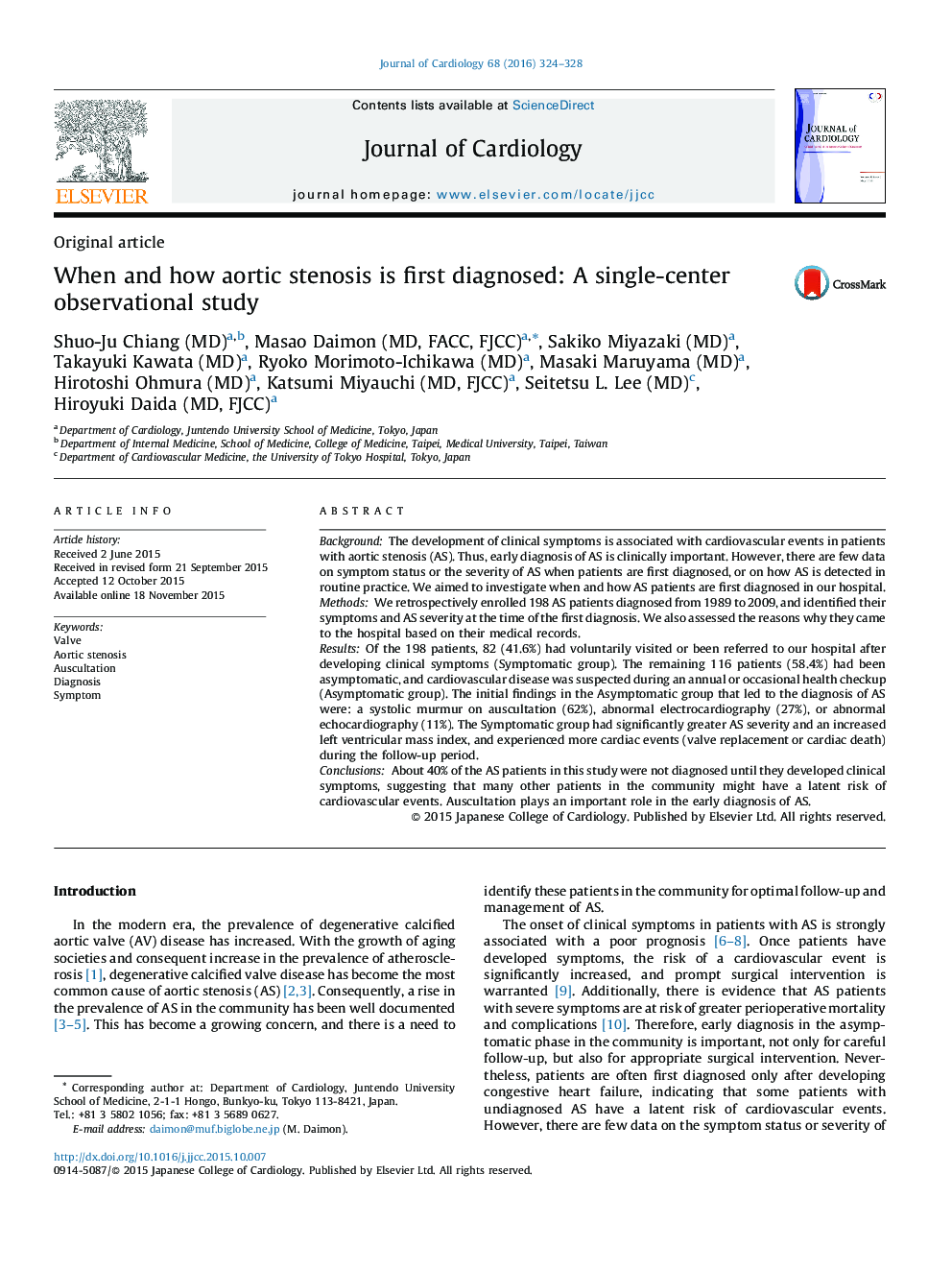| Article ID | Journal | Published Year | Pages | File Type |
|---|---|---|---|---|
| 2962691 | Journal of Cardiology | 2016 | 5 Pages |
BackgroundThe development of clinical symptoms is associated with cardiovascular events in patients with aortic stenosis (AS). Thus, early diagnosis of AS is clinically important. However, there are few data on symptom status or the severity of AS when patients are first diagnosed, or on how AS is detected in routine practice. We aimed to investigate when and how AS patients are first diagnosed in our hospital.MethodsWe retrospectively enrolled 198 AS patients diagnosed from 1989 to 2009, and identified their symptoms and AS severity at the time of the first diagnosis. We also assessed the reasons why they came to the hospital based on their medical records.ResultsOf the 198 patients, 82 (41.6%) had voluntarily visited or been referred to our hospital after developing clinical symptoms (Symptomatic group). The remaining 116 patients (58.4%) had been asymptomatic, and cardiovascular disease was suspected during an annual or occasional health checkup (Asymptomatic group). The initial findings in the Asymptomatic group that led to the diagnosis of AS were: a systolic murmur on auscultation (62%), abnormal electrocardiography (27%), or abnormal echocardiography (11%). The Symptomatic group had significantly greater AS severity and an increased left ventricular mass index, and experienced more cardiac events (valve replacement or cardiac death) during the follow-up period.ConclusionsAbout 40% of the AS patients in this study were not diagnosed until they developed clinical symptoms, suggesting that many other patients in the community might have a latent risk of cardiovascular events. Auscultation plays an important role in the early diagnosis of AS.
